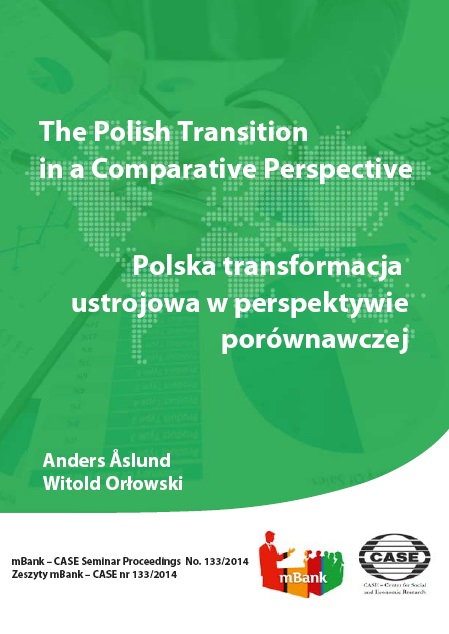The Polish Transition in a Comparative Perspective
 In 1989, Poland stood out as a country in chronic political and economic crisis. It had been ravaged by strikes, economic decline and default since 1976. A popular view both in Poland and abroad was that Poland was incurable. Germans talked about the polnische Wirtschaft (Polish economy), meaning dysfunctional economy, while the Swedes used the term polsk riksdag (Polish Parliament) for political disorder. Norman Davies, the great historian of Poland, called his monumental history of Poland God’s Playground because of all the disasters it has faced. He said these words “can be aptly used as an epithet for a country where fate has frequently played mischievous tricks”. Today, Poland stands out as possibly the greatest economic success among the thirty post-communist countries.
In 1989, Poland stood out as a country in chronic political and economic crisis. It had been ravaged by strikes, economic decline and default since 1976. A popular view both in Poland and abroad was that Poland was incurable. Germans talked about the polnische Wirtschaft (Polish economy), meaning dysfunctional economy, while the Swedes used the term polsk riksdag (Polish Parliament) for political disorder. Norman Davies, the great historian of Poland, called his monumental history of Poland God’s Playground because of all the disasters it has faced. He said these words “can be aptly used as an epithet for a country where fate has frequently played mischievous tricks”. Today, Poland stands out as possibly the greatest economic success among the thirty post-communist countries.
The only post-communist competitor is Estonia. As the Financial Times put it, Poland “has never had it so good” (Barber 2014). Now a full-fledged democracy, it became a member of NATO (North Atlantic Treaty Organization) in 1997 and joined the European Union in 2004. It would not be an exaggeration to say that the last twenty years have been the happiest in a millennium of Polish history, being characterized by peace, democracy, and rapidly rising welfare.
The first goal of this paper is to assess Poland’s economic performance in comparison with its nine closest peers — the Czech Republic, Slovakia, Hungary, the three Baltic countries (Estonia, Latvia, and Lithuania), Slovenia, Romania, and Bulgaria, which together form the Central and Eastern European ten (CEE-10). These ten former communist countries became members of the EU in 2004 or 2007. A second goal is to establish the causes of Poland’s successful economic performance, distinguishing what mattered, what went wrong, and what did not matter at all. Poland did very well during the global financial crisis, which we shall examine as well. Finally, the question arises about the challenges Poland faces now and how it is likely to perform in the future. Throughout this paper I use unweighted averages, giving each country equal weight regardless of its size.
The papers included in this publication were presented by Anders Aslund and Witold Orlowski during the 133rd mBank-CASE Seminar "The Polish Transition in a Comparative Perspective".
* mBank–CASE Seminar Proceedings are continuation of PBR–CASE and – since 1998 – BRE Bank–CASE Seminar Proceedings Series.
**Don't miss the upcoming mBank - CASE Seminars - sign up for our newsletter and follow us on facebook!
